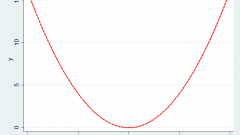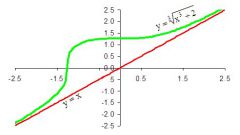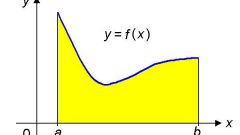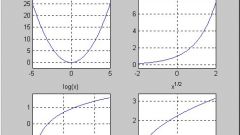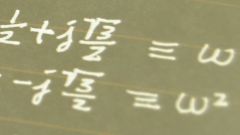Instruction
1
Record function, the study on which it is to be in the form y=y(x).
2
Replace the function argument with "-x". Substitute the argument in the function expression.
3
Simplify the expression.
4
So you got the same function written for the arguments "x" and "-x". Look at these two entries.
If y(-x)=y(x), it is an even function.
If y(-x)=-y(x), then it is an odd function.
If about the function, we cannot say that y(-x)=y(x) or y(-x)=-y(x), the parity property is a function of the General form. That is, it is neither even nor odd.
If y(-x)=y(x), it is an even function.
If y(-x)=-y(x), then it is an odd function.
If about the function, we cannot say that y(-x)=y(x) or y(-x)=-y(x), the parity property is a function of the General form. That is, it is neither even nor odd.
5
Write down your insights. Now you can use them in plotting functions or further analytical study of the properties of the function.
6
To talk about parity and odd functions even in the case where the already set schedule function. For example, a graph was the result of physical experiment.
If the graph of a function symmetric about the y-axis, then y(x) is an even function.
If the graph of a function symmetric about the x-axis, x(y) is an even function. x(y) is the inverse of the function y(x).
If the graph of a function symmetric about the origin (0,0), then y(x) is an odd function. Odd is also the inverse function x(y).
If the graph of a function symmetric about the y-axis, then y(x) is an even function.
If the graph of a function symmetric about the x-axis, x(y) is an even function. x(y) is the inverse of the function y(x).
If the graph of a function symmetric about the origin (0,0), then y(x) is an odd function. Odd is also the inverse function x(y).
7
It is important to remember that the concept of parity and of odd functions has a direct relationship with the domain of the function. If, for example, is even or odd the function exists at x=5, then it does not exist and when x=-5, what can be said about the function of the General form. When establishing parity and odd, pay attention to the domain of the function.
8
Examination of functions of even parity and odd parity correlated with the presence of many function values. To find the set of values of even functions, it is sufficient to consider half of the functions to the right or to the left of zero. If x>0 an even function y(x) takes values from A to b, then the same values it will take and when x<0.
To find the set of values taken by an odd function, is also sufficient to consider only one part of the function. If x>0 odd function y(x) takes a range of values from A to b, when x<0 it will make a symmetrical range of values from (- ) to (-A).
To find the set of values taken by an odd function, is also sufficient to consider only one part of the function. If x>0 odd function y(x) takes a range of values from A to b, when x<0 it will make a symmetrical range of values from (- ) to (-A).

